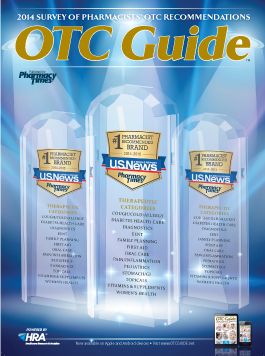Conquering Migraines
Migraine headaches affect an estimated 36 million individuals in the United States, inlcuding the patient population. Migraines are often characterized by pain that is typically unilateral and described as intense and throbbing. Migraines can negatively impact a patient’s quality of life; as a result, some patients experience depression, anxiety, and sleep disorders.1-5 A study published in 2013 suggests that there may be a link between the number and the severity of migraines in individuals with a history of allergies and hay fever.6
Migraines can be classified into 2 subtypes: migraines with aura, and migraines without aura.7,8 The pain associated with migraines may sometimes be preceded by an aura, the onset of which is described as abrupt; however, some patients do not experience an aura. An estimated 20% of patients who get migraines experience an aura.9 Some patients may report sensitivity to light, noise, or odors; some degree of nausea; and vomiting.1,4-7 The duration of migraines may range from a few hours to 3 days.1,4-7 Migraines may also be associated with sinus pain, neck pain, anxiety, mood changes, and difficulty concentrating.1
Many females experience migraines during the premenstrual part of the menstrual cycle, but migraines may also occur during and after the menstrual cycle.7,9,10 Migraines affect 18% of females and 6% of males. Additionally, some women may experience migraines during perimenopause and menopause, suggesting that hormone fluctuations may be a precipitating factor.7,9,10
Nonprescription Therapies
The nonprescription products currently marketed for the treatment and management of mild to moderate migraines contain analgesics such as acetaminophen, ibuprofen, or aspirin. The available combination formulations contain caffeine and an analgesic. Several alternative/natural medications are marketed for the relief and management of migraine symptoms.
Before a pharmacist recommends self-treatment of migraines to patients, it is imperative that patients exhibiting signs of an undiagnosed migraine be referred for medical evaluation to confirm a diagnosis and exclude other possible issues. To screen patients for allergies, contraindications, and drug interactions, pharmacists should carefully assess patients’ medical, medication, and allergy histories before recommending OTC analgesics for mild to moderate migraines.
Pharmacists can suggest implementing various nonpharmacologic measures that may help alleviate or prevent migraine headaches, such as relaxation techniques, avoiding stress, eating a balanced diet, and getting an adequate amount of sleep. Pharmacists should advise patients to always read product labels carefully prior to use, especially when using multi-ingredient products, in order to avoid potential toxicities, unnecessary drug use, or therapeutic duplications. For example, analgesics are often also found in cough, cold, and flu products as well as some allergy medications.
Most mild to moderate migraines last only a few hours and can be effectively managed through self-treatment. However, patients should be encouraged to seek medical care if they do not experience adequate relief after using OTC products, if they experience chronic migraines, or if migraines worsen or increase in intensity or frequency. In these cases, patients should be encouraged to discuss with their primary health care provider the various prescription options for preventive therapy. Parents and caregivers should be directed to have children with migraine symptoms evaluated by their primary health care provider to ascertain the most effective and safest treatment option.
Ms. Terrie is a clinical pharmacy writer based in Haymarket, Virginia.
References
- Migraine fact sheet. Migraine Research Foundation website. www.migraineresearchfoundation.org/fact-sheet.html. Accessed January 29, 2014.
- Facts about migraine. American Migraine Foundation website. www.americanmigrainefoundation.org/support-the-foundation/facts-about-migraine/. Accessed January 29, 2014.
- Reddy D. The pathophysiological and pharmacological basis of current drug treatment of migraine headache. Expert Rev Clin Pharmacol. 2013;6(3):271-288.
- Stovner LJ, Hagen K. Prevalence, burden, and cost of headache disorders. Curr Opin Neurol. 2006;19(3):281-285.
- Migraine headaches. American Headache Society website. www.achenet.org/resources/types_of_headaches/#migraine. Accessed January 29, 2014.
- Martin T, Fanning KM, Serrano D, et al. Chronic rhinitis and its association with headache frequency and disability in persons with migraine: results of the American Migraine Prevalence and Prevention (AMPP) Study. Cephalalgia. November 2013.
- Headache: hope through research. National Institute of Neurological Disorders and Stroke website. www.ninds.nih.gov/disorders/headache/detail_headache.htm. Accessed January 29, 2014.
- Migraine. National Headache Foundation website. www.headaches.org/educational_modules/completeguide/migraine2.html. Accessed January 29, 2014.
- Aura. National Headache Foundation website. www.headaches.org/education/Headache_Topic_Sheets/Aura. Accessed January 29, 2014.
- Wilkinson J, Remington T. Headache. In: Krinsky D, Berardi R, Ferreri S, et al, eds. Handbook of Nonprescription Drugs. 17th ed. Washington, DC: American Pharmacists Association; 2012.

